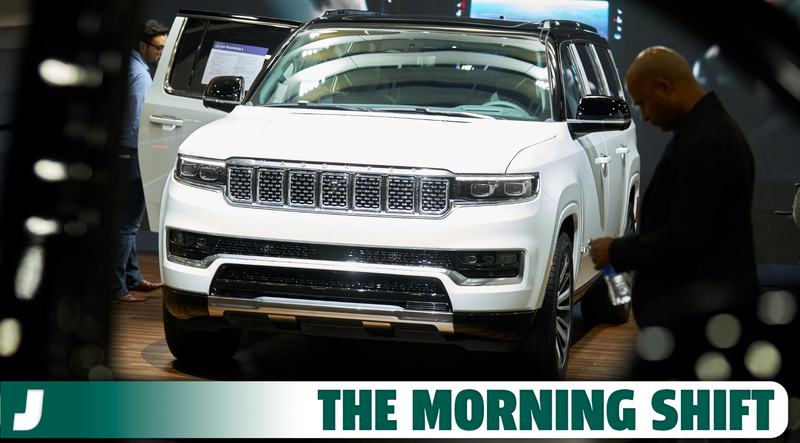Jeep's Cars Got A Lot More Expensive And Now It Is Mad Its Market Share Went Down

Good morning! It’s Monday, July 31, 2023, and this is The Morning Shift, your daily roundup of the top automotive headlines from around the world, in one place.
1st Gear: Jeep
Jeeps have been going up in price for a few years now, an industry-wide trend, because a lesson automakers took from the pandemic and all of the supply-chain madness is what if we sold fewer cars but more expensive ones? That isn’t great for those of us who miss the days of almost affordable new cars, but those days are gone anyway, and for auto executives who have shareholders and boards to please the new reality is more comfortable.
Read more
That Jeep went down this road, too, with a car like the Grand Wagoneer — which currently starts at $91,140 and can easily get into six-figures with options — was only surprising in that Jeep is not a brand you’re supposed to spend a lot of money on.
Still, according to The Wall Street Journal on Monday, all of this had the unsurprising effect of weakening Jeep’s market share, since they weren’t chasing volume so explicitly. And also something-something about how they are bad at marketing:
Since mid-2018, Jeep has surrendered significant market share, falling from sixth to ninth in sales among top U.S. brands.
[...]
Still, last week, Stellantis Chief Executive Carlos Tavares expressed concern over Jeep’s market-share slide and vowed to reverse it.
“We need to do a better job in Jeep, mostly Jeep in the U.S.,” Tavares said during a conference call discussing the Netherlands-based automaker’s results for the first half of 2023.
He said the brand slipped recently with ineffective marketing tactics and didn’t always have the right versions of popular models available at dealerships. The company intends to gain back market share in the coming year, he added.
“It is not rocket science,” Tavares said. “We just have to do it properly.”
Perhaps more interesting here is that part of the problem, too, is that Jeep’s customer base is struggling.
Jeep customers have historically skewed toward lower credit scores, analysts say, and many of those buyers have been pushed out of the current new-car market. At the end of May, Jeep buyers who took out a car loan had an average rate of 8.5%, higher than at competitors such as Ford and Toyota, according to Cox data.
“They had a high percentage of subprime buyers, and those have gone away,” said Michelle Krebs, a Cox analyst. Stellantis said it had no comment on its percentage of subprime customers.
Jeep, like every automaker, wants high profits, it wants a high market share, it wants to sell lots of shiny, expensive new things. Or more expensive and even shinier new things, until someone sends a memo about how it needs to go back to the strategy of a few years ago. Or a mix of the two, when someone else sends a memo saying that this is really all about achieving the right balance. This was all easier to understand when Jeep was just a Wrangler and Cherokee brand. We haven’t even talked about the Gladiator and what a weird car that has been.
2nd Gear: Lamborghini
The supercar and Urus maker Lamborghini said Monday that it could sell at least 10,000 cars in 2023, with an emphasis on could, because first-half sales were 5,341.
From Reuters:
Chairman and CEO Stephan Winkelmann said it was not easy to make forecasts due to market uncertainties, including with raw materials, but added that selling 10,000 cars this year was a “feasible goal”.
“It is not something we are obliged to achieve, but it’s important to show what the health of the company is and how big (clients’) willingness to buy our cars is,” Winkelmann said.
Supported by the success of its Urus SUV, which costs around 200,000 euros ($219,900) before tax, Lamborghini has in recent years expanded its output, relying on solid demand from wealthy car lovers. It delivered over 9,200 vehicles in 2022.

 Yahoo Autos
Yahoo Autos 